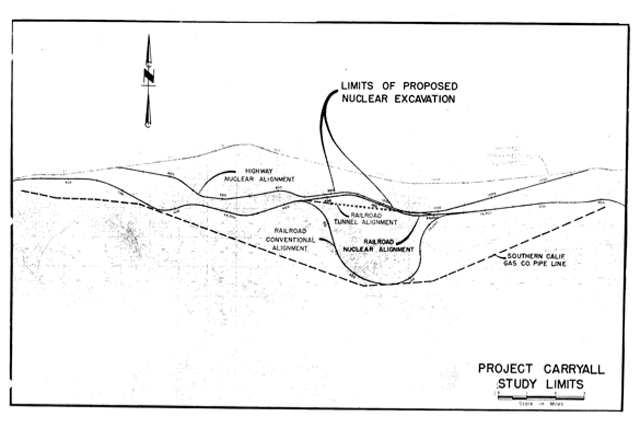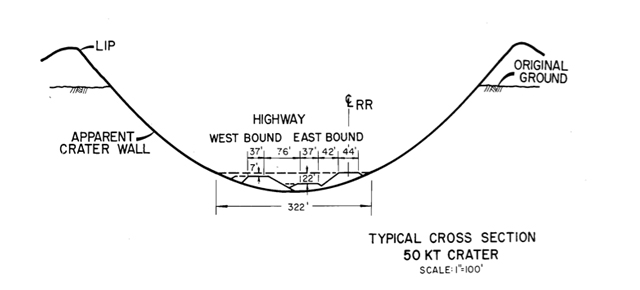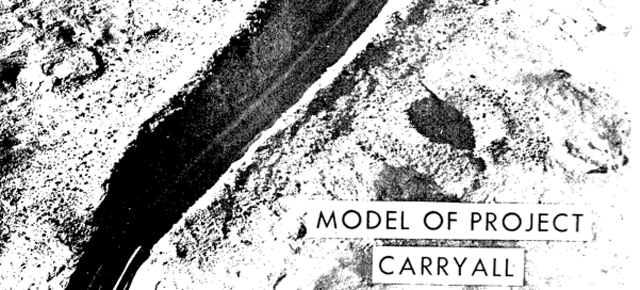Rising out of California’s Mojave Desert are the Bristol Mountains, 1200m of rock blocking easy passage through the scorching desert. For decades, Route 66 and the Santa Fe Railway have had to bend south, acquiescing to the mountains’ height. But in the 1960s, at the peak of atomic age, we had a plan to blast through the mountains once and for all — with nuclear bombs, of course.
It began with the Santa Fe Railway Company, which wanted a straighter and flatter path through the Bristol Mountains. The new route would require either a 2-mile long tunnel or cuts 150m deep into the mountain — far too expensive for railroad on its own. It did, however, pique the interest of the Atomic Energy Commission, which was searching for peacetime uses for nukes.

At the same time, California was building Interstate 40, a faster, smoother highway to replace Route 66. Wouldn’t the California State Division of Highways also be interested in a straight shot through the Bristol Mountains as well? Thus, Project Carryall was born.
This nuclear plan entailed a total of 23 bombs: 22 detonated in a row to carve out passage through the moutain and one more to create a giant crater for runoff water. In all, a total of 68,000,000 cubic yards would be excavated. Including the cost of the bombs themselves, the nuclear option would cost $US13.8 million, $US8 million less than the conventional method. “The study group has concluded that this project is technically feasible,” wrote a California highway engineer in a study, “It can be done, and it can be done safely.”
Safely? From our modern perspective, the feasibility report reads as surprisingly cavalier. Workers could enter when the radioactivity had sufficiently decayed — after just four days according to the report.

Perhaps what’s most extraordinary about Project Carryall, which is discussed in the context of America’s highways in Earl Swift’s The Big Roads, is that it was not an extraordinary idea for the time. In the ’60s, the Atomic Energy Commission set up Operation Plowshare, which spent $US770 million over the next decade and a half studying the use of nukes for infrastructure projects. Their ideas ran from nuking a new Panama Canal to creating a new harbor in Alaska.
But most of the ideas, including Project Carryall, stayed on paper. The 1962 test creation of the Sedan Crater in Nevada sparked controversy and fears about unpredicted nuclear fallout. In 1977, Operation Plowshare ended, having created nothing more than craters. Interstate 40 in the Mojave Desert was carved out using conventional bombs.

The optimism and ambition of Operation Plowshare seems dangerously misplaced in a modern world attuned to the dangers of not only bombs but also nuclear power plants. On the other hand, it’s hard to fault scientists, who having discovered a way unleash a powerful force in the world, struggled to find ways to use it for good.
Detonating nuclear bombs on Earth is now banned under the Comprehensive Nuclear Test Ban Treaty. At the same time, the dream that nuclear bombs can be harnessed to save humanity is not entirely dead, at least in space. Proposals to deflect deadly asteroids headed toward Earth, for example, often rely on the power of nuclear bombs. What would Operation Plowshare have thought about that?
Pictures: Engineering With Nuclear Explosives
